-
 Bitcoin
Bitcoin $116400
-0.36% -
 Ethereum
Ethereum $4033
3.40% -
 XRP
XRP $3.302
-1.26% -
 Tether USDt
Tether USDt $1.000
-0.02% -
 BNB
BNB $796.1
1.67% -
 Solana
Solana $177.8
1.89% -
 USDC
USDC $0.9999
0.00% -
 Dogecoin
Dogecoin $0.2314
4.09% -
 TRON
TRON $0.3381
0.14% -
 Cardano
Cardano $0.7989
1.22% -
 Stellar
Stellar $0.4496
-1.84% -
 Chainlink
Chainlink $20.42
9.42% -
 Hyperliquid
Hyperliquid $41.17
0.88% -
 Sui
Sui $3.914
3.77% -
 Bitcoin Cash
Bitcoin Cash $584.7
1.52% -
 Hedera
Hedera $0.2632
-0.54% -
 Avalanche
Avalanche $24.09
3.40% -
 Ethena USDe
Ethena USDe $1.001
-0.02% -
 Litecoin
Litecoin $123.2
1.33% -
 Toncoin
Toncoin $3.318
-0.04% -
 UNUS SED LEO
UNUS SED LEO $8.984
-0.05% -
 Shiba Inu
Shiba Inu $0.00001323
2.85% -
 Uniswap
Uniswap $10.90
4.41% -
 Polkadot
Polkadot $3.999
3.34% -
 Dai
Dai $1.000
0.01% -
 Cronos
Cronos $0.1630
9.64% -
 Bitget Token
Bitget Token $4.484
0.82% -
 Monero
Monero $272.4
2.44% -
 Pepe
Pepe $0.00001173
6.03% -
 Aave
Aave $290.8
2.88%
How to view the volume stacking and volume increase? How to be alert to shrinking volume and stagflation?
Volume stacking indicates sustained interest in a trend, while a sudden volume increase can signal a breakout or reversal in cryptocurrency markets.
Jun 03, 2025 at 05:14 am
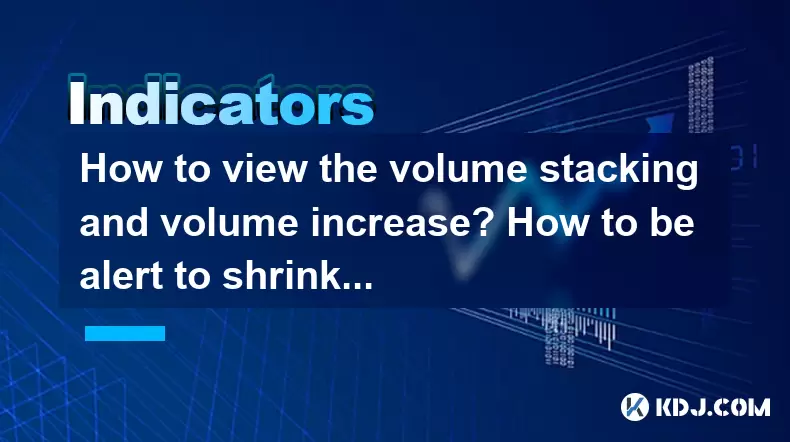
Understanding Volume Stacking and Volume Increase
Volume stacking refers to the accumulation of trading volume over a period, often indicating the strength and sustainability of a price trend. When traders observe consistent volume stacking, it suggests that there is significant interest and participation in the market, which can lead to more robust price movements. Volume increase, on the other hand, refers to a sudden surge in trading volume, often signaling a potential breakout or reversal in price.
To view volume stacking, traders typically use volume indicators on their charting platforms. For example, on a platform like TradingView, you can add a volume indicator to your chart to see the volume bars. To identify volume stacking, look for a series of volume bars that are consistently above average over several periods. This indicates sustained interest and can be a bullish signal if accompanied by rising prices.
For volume increase, pay attention to sudden spikes in volume. These can be observed by comparing the current volume bar to previous bars. A significant increase in volume, especially if it coincides with a price breakout, can confirm the strength of the move. To view this, ensure your chart is set to display volume and zoom in on the time frame where the increase occurred.
Being Alert to Shrinking Volume and Stagflation
Shrinking volume can be a warning sign for traders, indicating a potential loss of interest or momentum in the market. When volume starts to decline, it may suggest that the current trend is losing steam, and a reversal could be imminent. Stagflation in the context of cryptocurrency refers to a period where prices remain stagnant while volume decreases, signaling a lack of market activity and potential for further price drops.
To stay alert to shrinking volume, traders should regularly monitor their volume indicators. Look for a consistent decrease in volume over time, especially if it occurs alongside price consolidation or minor fluctuations. This can be a precursor to a significant price movement in the opposite direction of the current trend.
For stagflation, observe periods where the price remains relatively unchanged while volume continues to drop. This can be identified by setting up alerts on your trading platform to notify you when volume falls below a certain threshold while prices remain within a narrow range. Such conditions may indicate that the market is losing interest and could be ripe for a breakdown.
Setting Up Volume Indicators on Trading Platforms
To effectively view volume stacking and volume increase, it's essential to set up volume indicators correctly on your trading platform. Here’s how to do it on popular platforms like TradingView and Binance:
On TradingView:
- Open your chart for the cryptocurrency you are analyzing.
- Click on the "Indicators" button at the top of the chart.
- Search for "Volume" in the indicator search bar.
- Select the "Volume" indicator and add it to your chart.
- Adjust the settings to your preference, such as changing the color of the volume bars or setting up alerts for specific volume levels.
On Binance:
- Navigate to the trading interface for your chosen cryptocurrency.
- Click on the "Indicators" tab on the right side of the chart.
- Select "Volume" from the list of available indicators.
- Customize the appearance of the volume bars as needed.
- Set up alerts for volume changes by clicking on the "Alerts" button and specifying your conditions.
Using Alerts to Monitor Volume Changes
Alerts can be a crucial tool for staying vigilant about volume changes. Setting up alerts for volume stacking, volume increase, shrinking volume, and stagflation can help you react quickly to market movements. Here's how to set up alerts for these conditions:
For volume stacking:
- Set an alert to trigger when the volume remains above a certain threshold for a specified number of periods. For example, you might set an alert to notify you when the volume stays above the 20-day moving average for 5 consecutive days.
For volume increase:
- Configure an alert to notify you when the current volume bar exceeds a certain percentage of the average volume over a specified period. For instance, you could set an alert for when the volume spikes to 200% above the 30-day average.
For shrinking volume:
- Establish an alert that triggers when the volume falls below a predetermined level for a consecutive number of periods. An example might be setting an alert when the volume drops below the 50-day moving average for 3 consecutive days.
For stagflation:
- Create an alert that notifies you when the price remains within a certain range while the volume continues to decrease. You might set this alert to trigger when the price stays within a 2% range for 7 days while the volume drops below the 10-day moving average.
Analyzing Volume Patterns with Technical Analysis
Technical analysis can provide deeper insights into volume patterns and help traders make more informed decisions. Combining volume analysis with other technical indicators such as moving averages, RSI, and MACD can enhance your understanding of market dynamics.
Moving Averages: Use moving averages to smooth out volume data and identify trends more clearly. For instance, a 20-day moving average of volume can help you see whether the current volume is above or below the recent average, aiding in the identification of volume stacking or shrinking volume.
RSI (Relative Strength Index): The RSI can help confirm volume signals. If volume is increasing and the RSI is also rising, it can confirm a bullish trend. Conversely, if volume is shrinking and the RSI is falling, it may signal a bearish trend.
MACD (Moving Average Convergence Divergence): The MACD can help identify potential reversals when combined with volume data. A bullish divergence in the MACD alongside increasing volume can signal a strong buying opportunity, while a bearish divergence with shrinking volume may indicate a selling opportunity.
Practical Example: Analyzing Volume on a Cryptocurrency Chart
Let's consider a practical example of how to analyze volume on a cryptocurrency chart. Suppose you are analyzing Bitcoin (BTC) on a daily time frame:
Volume Stacking: You notice that over the past 10 days, the volume bars have been consistently above the 50-day moving average of volume. This suggests strong buying interest and could indicate a sustained bullish trend.
Volume Increase: Suddenly, on the 11th day, the volume bar spikes to 300% above the 30-day average. This coincides with a breakout above a key resistance level. The increased volume confirms the strength of the breakout, suggesting a potential continuation of the bullish trend.
Shrinking Volume: After the breakout, you observe that over the next 5 days, the volume bars start to decline and fall below the 20-day moving average. This could signal that the bullish momentum is waning, and a potential reversal might be on the horizon.
Stagflation: Following the period of shrinking volume, the price of Bitcoin remains within a 1% range for 7 consecutive days while the volume continues to decrease. This stagflation suggests a lack of market interest and could be a precursor to a significant price drop.
Frequently Asked Questions:
Can volume analysis be used for all cryptocurrencies, or are there specific ones where it's more effective?
Volume analysis can be applied to all cryptocurrencies, but it tends to be more effective for those with higher liquidity and larger market caps, such as Bitcoin and Ethereum. These cryptocurrencies typically have more reliable volume data, making it easier to draw meaningful conclusions from volume patterns.How do I differentiate between normal volume fluctuations and significant volume changes?
To differentiate between normal fluctuations and significant changes, compare the current volume to historical averages. Use moving averages of volume to establish a baseline. Significant changes are those that deviate markedly from these averages, such as spikes to 200% above the 30-day average or consistent declines below the 50-day average.Are there any specific tools or software recommended for advanced volume analysis in the cryptocurrency market?
For advanced volume analysis, tools like TradingView offer robust volume indicators and customization options. Additionally, software like Coinigy and CryptoWatch provide detailed volume data and can be integrated with multiple exchanges for comprehensive analysis.How often should I check volume data to stay informed about market trends?
The frequency of checking volume data depends on your trading strategy. For day traders, checking volume data every few hours or even more frequently is advisable. For swing traders, daily checks might suffice. Long-term investors may review volume data weekly or monthly to monitor broader trends.
Disclaimer:info@kdj.com
The information provided is not trading advice. kdj.com does not assume any responsibility for any investments made based on the information provided in this article. Cryptocurrencies are highly volatile and it is highly recommended that you invest with caution after thorough research!
If you believe that the content used on this website infringes your copyright, please contact us immediately (info@kdj.com) and we will delete it promptly.
- Shiba Inu (SHIB) in the Crypto Landscape: Community, Trends, and Future Outlook
- 2025-08-09 20:30:12
- Lasers in Modern Warfare: Iron Beam and the Future of Defense
- 2025-08-09 20:30:12
- Maxi Doge Presale: The Meme Coin That's Pumping Iron and Prices!
- 2025-08-09 19:10:11
- Rare Coin Warning: Don't Get Fooled by That 1p Coin!
- 2025-08-09 18:50:12
- Cardano, Unilabs, and Tron Price: Decoding the Latest Crypto Buzz
- 2025-08-09 18:30:12
- Aerodrome Finance: Price Targets and the Bullish Channel - What's Next?
- 2025-08-09 18:50:12
Related knowledge

What does it mean when the Triple Moving Average (TRIX) turns downward but the price doesn't fall?
Aug 09,2025 at 12:42pm
Understanding the Triple Moving Average (TRIX) IndicatorThe Triple Moving Average, commonly known as TRIX, is a momentum oscillator designed to filter...

What does it mean when the Williams' oscillator repeatedly hits bottoms but fails to rebound?
Aug 09,2025 at 09:28am
Understanding the Williams %R OscillatorThe Williams %R oscillator, developed by Larry Williams, is a momentum indicator used in technical analysis to...
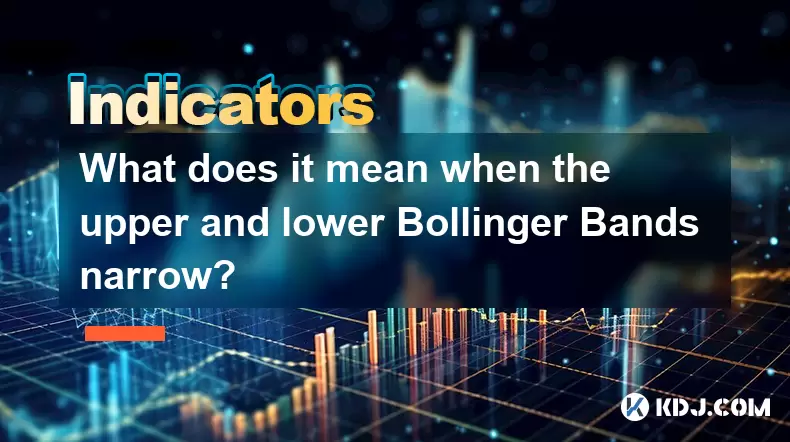
What does it mean when the upper and lower Bollinger Bands narrow?
Aug 09,2025 at 03:00pm
Understanding Bollinger Bands in Cryptocurrency TradingBollinger Bands are a widely used technical analysis tool in the cryptocurrency market, develop...
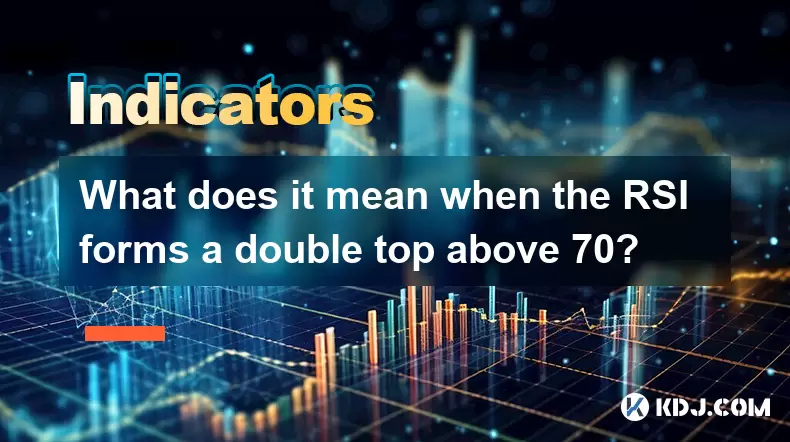
What does it mean when the RSI forms a double top above 70?
Aug 09,2025 at 05:50pm
Understanding the RSI and Overbought ConditionsThe Relative Strength Index (RSI) is a momentum oscillator that measures the speed and change of price ...
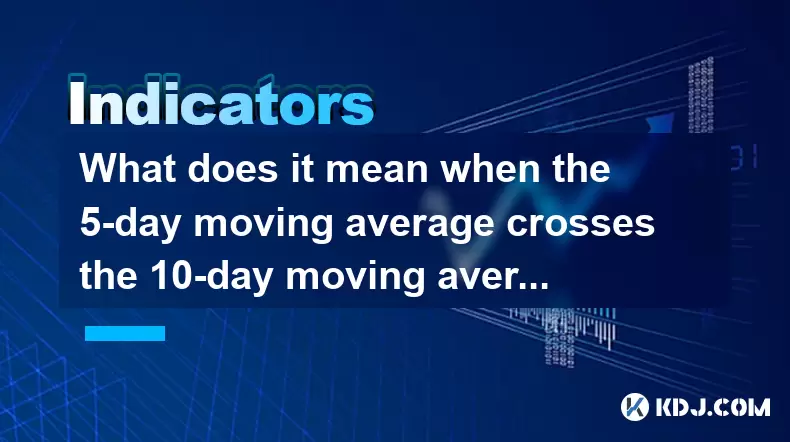
What does it mean when the 5-day moving average crosses the 10-day moving average but the 20-day moving average remains upward?
Aug 09,2025 at 03:35pm
Understanding Moving Averages in Cryptocurrency TradingMoving averages are foundational tools in technical analysis, especially within the cryptocurre...
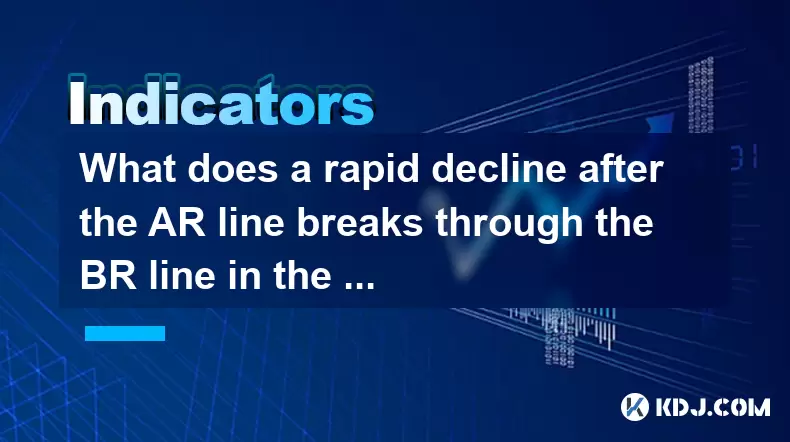
What does a rapid decline after the AR line breaks through the BR line in the ARBR indicator indicate?
Aug 09,2025 at 04:42pm
Understanding the ARBR Indicator ComponentsThe ARBR indicator is a technical analysis tool that combines two oscillators: the AR (Amplitude Ratio) and...

What does it mean when the Triple Moving Average (TRIX) turns downward but the price doesn't fall?
Aug 09,2025 at 12:42pm
Understanding the Triple Moving Average (TRIX) IndicatorThe Triple Moving Average, commonly known as TRIX, is a momentum oscillator designed to filter...

What does it mean when the Williams' oscillator repeatedly hits bottoms but fails to rebound?
Aug 09,2025 at 09:28am
Understanding the Williams %R OscillatorThe Williams %R oscillator, developed by Larry Williams, is a momentum indicator used in technical analysis to...

What does it mean when the upper and lower Bollinger Bands narrow?
Aug 09,2025 at 03:00pm
Understanding Bollinger Bands in Cryptocurrency TradingBollinger Bands are a widely used technical analysis tool in the cryptocurrency market, develop...

What does it mean when the RSI forms a double top above 70?
Aug 09,2025 at 05:50pm
Understanding the RSI and Overbought ConditionsThe Relative Strength Index (RSI) is a momentum oscillator that measures the speed and change of price ...

What does it mean when the 5-day moving average crosses the 10-day moving average but the 20-day moving average remains upward?
Aug 09,2025 at 03:35pm
Understanding Moving Averages in Cryptocurrency TradingMoving averages are foundational tools in technical analysis, especially within the cryptocurre...

What does a rapid decline after the AR line breaks through the BR line in the ARBR indicator indicate?
Aug 09,2025 at 04:42pm
Understanding the ARBR Indicator ComponentsThe ARBR indicator is a technical analysis tool that combines two oscillators: the AR (Amplitude Ratio) and...
See all articles

























































































